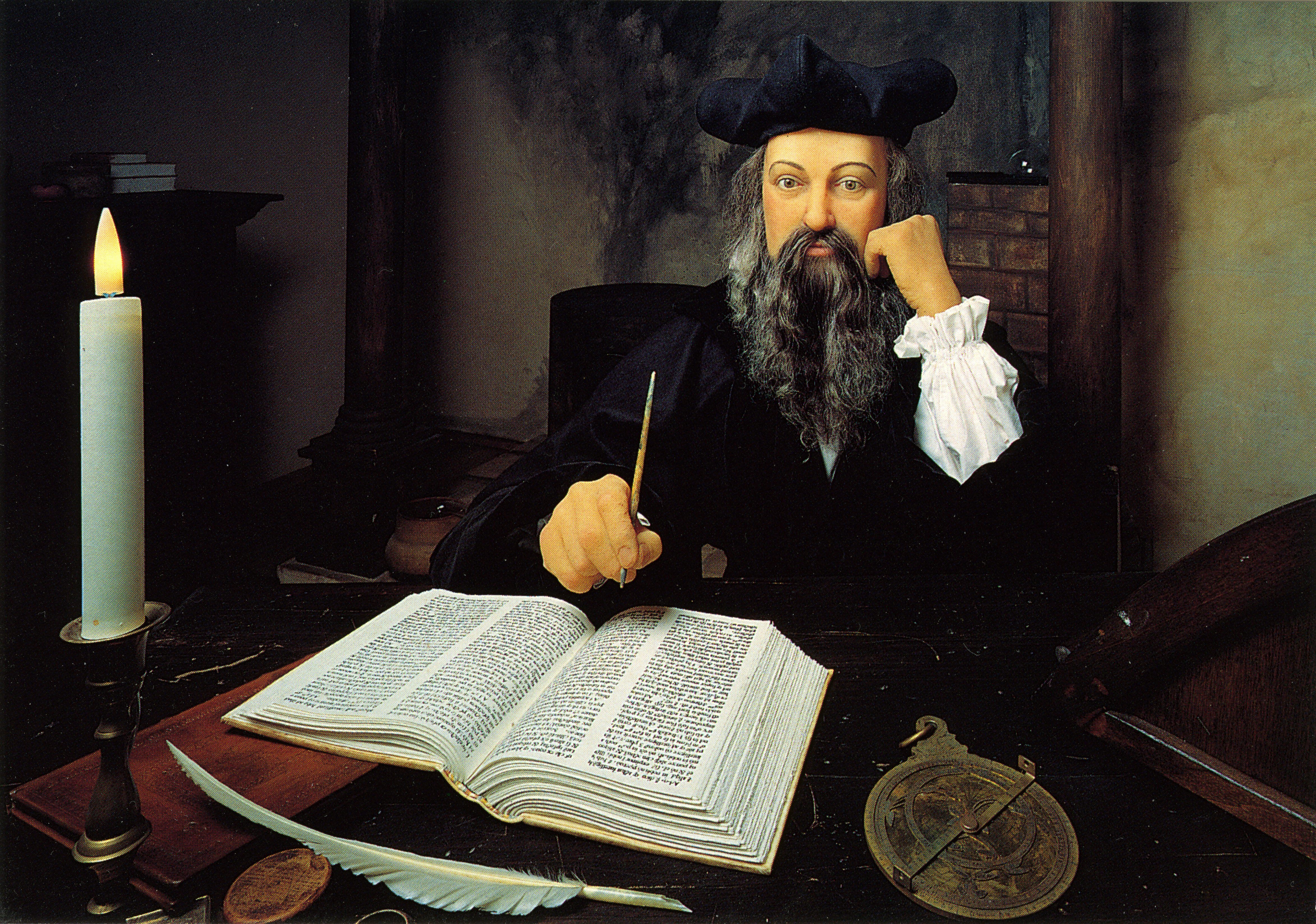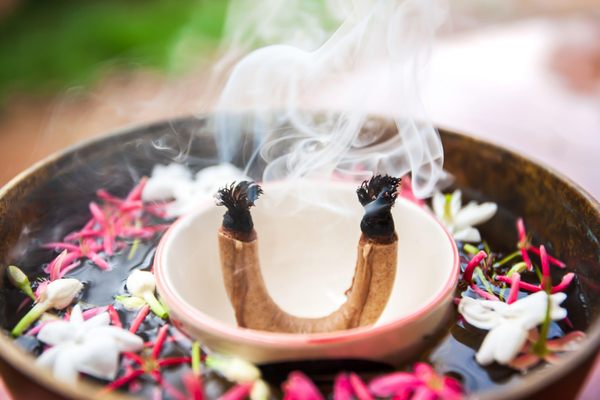Nostradamus Wrote Prophecies; He Also Made Jelly
His cookbook contained recipes for sweets and plague remedies.

Michel de Nostredame, better known as Nostradamus, was a 16th-century French writer, astrologer, and prophet. In his 1555 book Les Propheties, he laid out predictions for centuries to come: all in rhyme, of course. According to believers, Nostradamus successfully predicted the French revolution, the World Wars, and the election of Donald Trump.
But Nostradamus had another mystical power that’s less well known: the ability to whip up fabulous jellies. In 1552, he published the Traité des fardements et confitures, or the “Treatise on Cosmetics and Jams.” One of them was even an aphrodisiac.
The book didn’t come completely out of nowhere. Nostradamus was, among other things, an apothecary. Combining herbalism and pharmacy, he devised and recorded remedies. It’s even said he was kicked out of university when his past career as an apothecary was revealed: Tradesmen were considered sordid, and badmouthing actual doctors didn’t help his cause. But Nostradamus bounced back to travel Europe as an in-demand apothecary and famed plague fighter.
Oddly enough, his favorite plague remedies can be found in Traité des fardements et confitures. While it might seem odd to include medicines, sweets, and beauty tips all in the same volume, early recipe books often offered such hodgepodges. Plus, sugar was so rare and valuable that it was often regarded as medicinal, especially, according to The Oxford Companion to Sugar and Sweets, for “warming [the body], and as an effective laxative.” During Nostradamus’s time, apothecaries often controlled the sale of sugar. (Unfortunately, neither his sweets nor his herbal remedies could save his wife and two children, who died of plague.)

Some of Nostradamus’s recipes in the Traité, which are collected in The Elixirs of Nostradamus, seem downright poisonous. Beauty treatments call for scary ingredients such as lye (for giving hair blonde highlights) and crushed crystal (for a teeth scrub). To make a beard darker and softer—or to dye whiskers the color of “black amber”—Nostradamus recommends soap mixed with ashes and walnut juice.
The Traité’ also includes some genre-bending (at least by modern standards) recipes, such as a jelly-like love potion that contains the blood of seven male sparrows, cinnamon, and mandrake apples. (Swallows are thought to mate for life, which makes them a potent love symbol.) The syrup that results from boiling and straining the mixture, Nostradamus claims, must be stored in a gold or silver container. A mere spoonful causes a fiery passion that can prove dangerous if unrequited. After all, Nostradamus writes, it was invented by Medea, the famous female villain of legend.
But other recipes are more recognizable and downright edible. In the Traité, sugar is touted for its ability to preserve fresh fruit, and many of the recipes resemble modern jam and jelly techniques. A recipe for morello-cherry jelly involves fruit cooked until soft enough to strain out the pits and skins, then mixed with sugar. If a dab of the jelly on a plate doesn’t slide around, Nostradamus writes, then it’s ready to be stored.

But at the time, sugar was fabulously expensive. This is probably why Nostradamus writes that several of his sweet concoctions are intended only for nobility or kings. Consider his quince jelly recipe. Nostradamus turns up his nose at those silly enough to peel their quinces before cooking them: The rind and peel, he writes, enhances the jelly. After boiling the fruit, straining it, and adding sugar (taking care not to overcook), the final product has the color of a ruby and is “fit to set before a king.”
Nostradamus didn’t just write about jellies. One recipe for preserved pumpkin is touted as having fever-reducing abilities. He also includes a recipe for marzipan, a type of sweet almond candy still popular today. Though he admits that the recipe is simple and common, he defends its inclusion on the basis that ordinary men and women may not know how to make it. Plus, he adds, it’s medicinal and tastes great. It doesn’t take a soothsayer to deduce that the same probably can’t be said of the sparrow blood-soaked love potion.
Gastro Obscura covers the world’s most wondrous food and drink.
Sign up for our email, delivered twice a week.







































Follow us on Twitter to get the latest on the world's hidden wonders.
Like us on Facebook to get the latest on the world's hidden wonders.
Follow us on Twitter Like us on Facebook